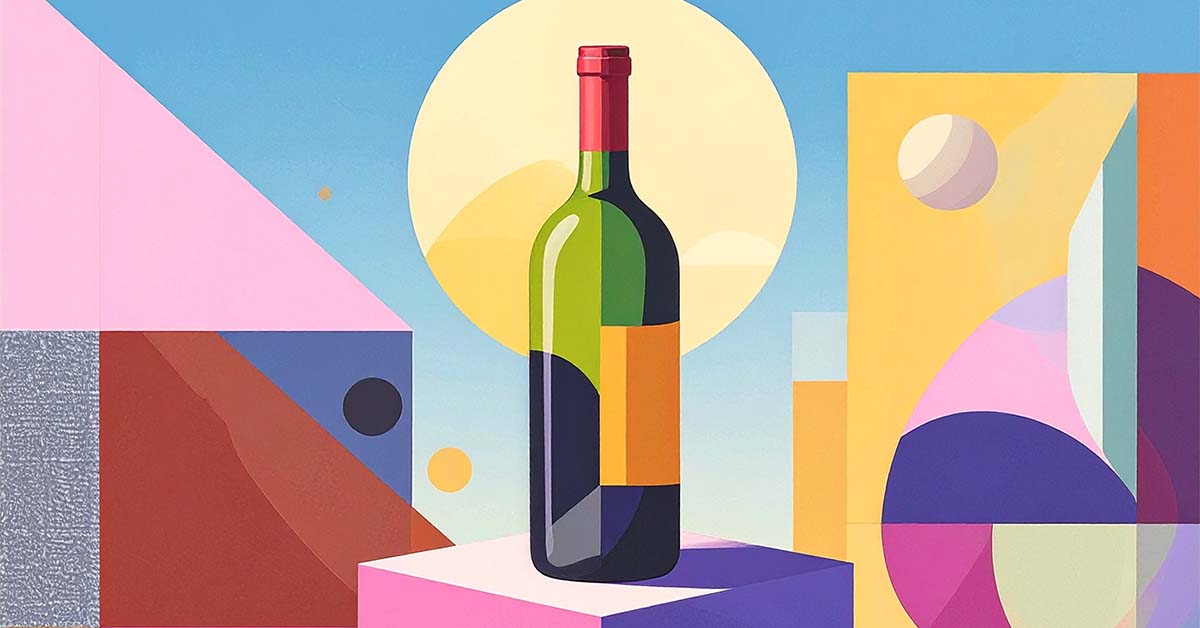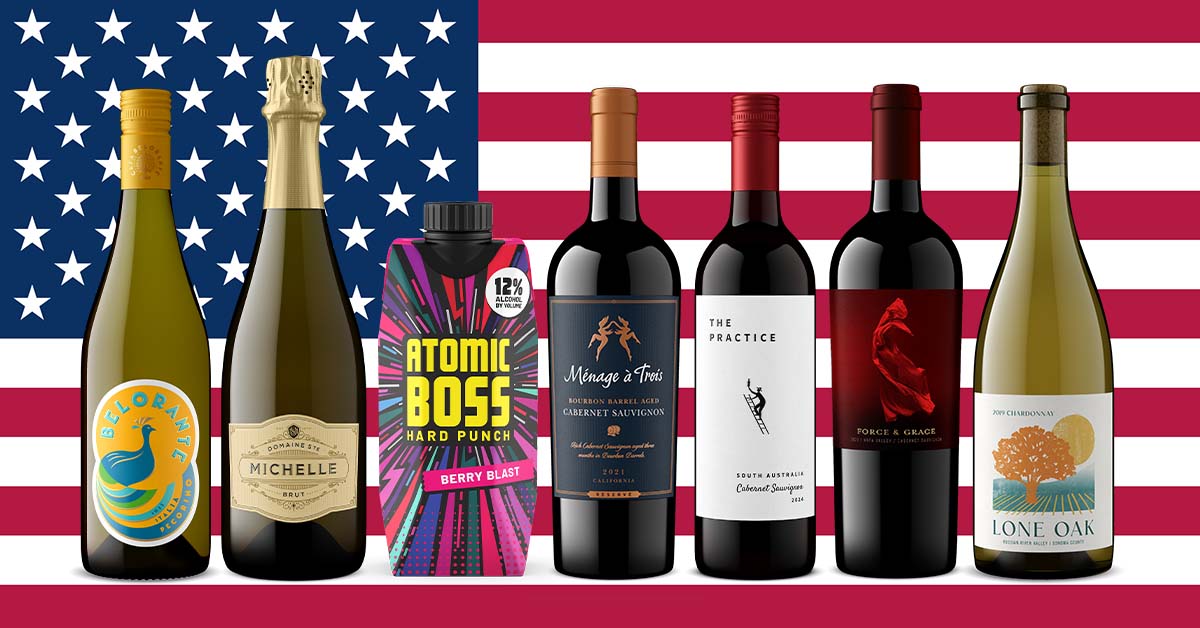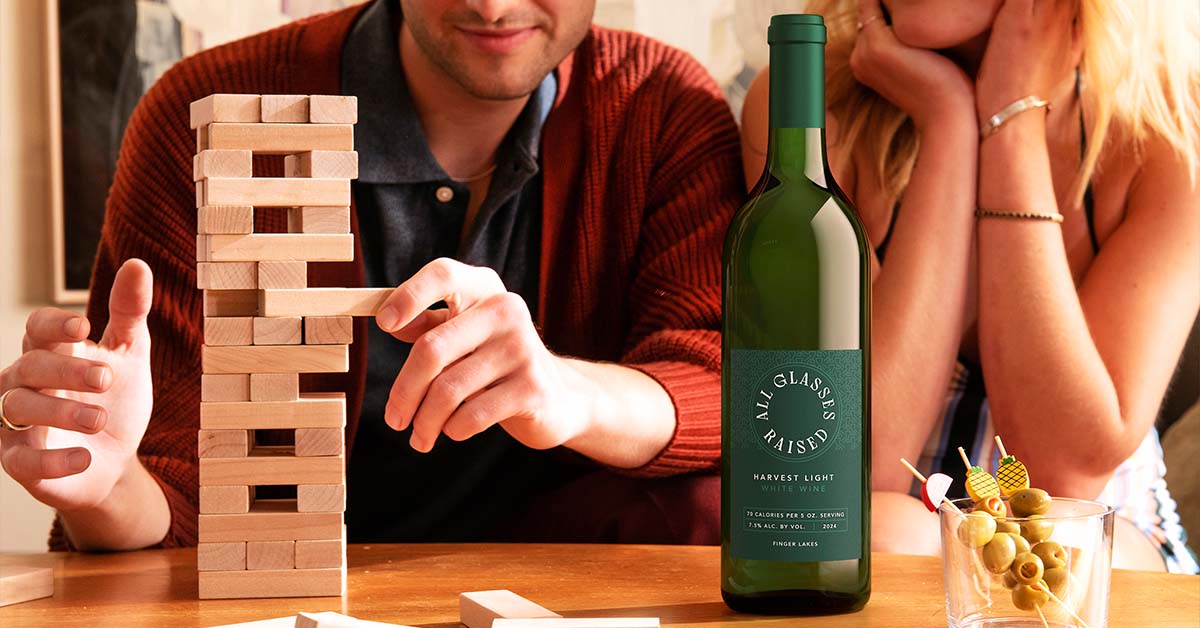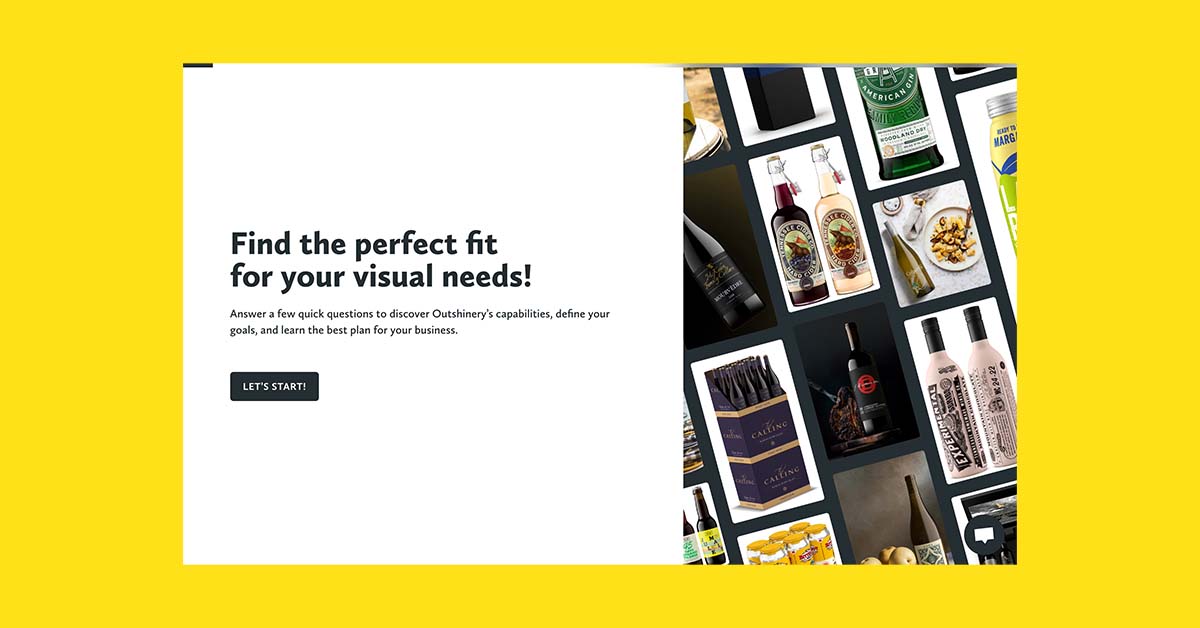The Rise of 3D product renders for product marketing
Why today's biggest brands rely on CGI images, not traditional photography studio.

In the competitive world of marketing, it’s essential to stay ahead of the game. Standing out from the crowd is critical to gain traction, attract customers, and increase sales. One of the most significant innovations in recent years has been the widespread adoption of 3D renders for product and brand photography.
3D product rendering enhances the presentation of products online, aiding ecommerce businesses in showcasing their products effectively by providing visual representations that mimic real-life experiences, thereby helping customers make informed purchase decisions.
In today’s digital age, many leading brands, including Apple and IKEA, have adopted 3D rendering services for brand and product photography for several compelling reasons. Well-known wine industry staples including Penfolds, Kendall-Jackson, Cline, Wente, and Wolf Blass are using 3D rendering services to showcase their products, and it’s paying off.
In this post, we’ll explore why 3D rendering is better than traditional photography, and how it can benefit wine marketers, winery owners, and wine enthusiasts. Let’s explore the advantages of 3D renders and how they can effectively reach more customers at scale in 2023 and beyond.
Short summary
- The history of photorealistic renderings
- Which brands use this technology?
- Reasons why top brands choose product visualization services
- Advantages of 3D renders over traditional photography
- How realistic renderings reach more customers at scale
- Outshinery solutions for the alcohol industry
Introduction to 3D Product Rendering
3D product rendering is a cutting-edge process that leverages computer software to create realistic images of products. Unlike traditional photography, which requires physical prototypes and elaborate setups, 3D product rendering allows businesses to generate high-quality marketing materials with remarkable efficiency. This technology enables companies to produce photorealistic images from various angles, showcasing intricate product details in a more engaging and interactive manner.
For ecommerce brands, 3D product rendering is a game-changer, as it significantly enhances customer engagement and reduces development costs. By eliminating the need for physical prototypes, businesses can streamline their marketing efforts and present their products in the best possible light.
The history of 3D renders
If you’ve ever tried to capture the look and feel of your winery’s products for a marketing campaign only to come away with mediocre results, then 3D renders are likely the answer. Dubbed by some as “The future of product photography”, this cutting-edge technology can help create powerful visuals that excite your customers and make your winery stand out in a crowded marketplace. In this post, we’ll explore how photographic rendering is revolutionizing product photography for those in the wine industry and share best practices on how you can get started. We guarantee that by investing in quality 3D renders you will drive more sales through truly engaging visual content!
The history of rendering 3d visualization for photography is a fascinating journey that has evolved over several decades. In the early stages, technical drawings were used to create detailed digital models, enhancing the accuracy of 3D product rendering. Here’s a brief overview of the key milestones and developments in the history of 3D rendering for photography.
1960s - Early computer graphics
The origins of digital rendering can be traced back to the 1960s when computer graphics began to emerge. Early computer scientists and researchers like Ivan Sutherland and David Evans created primitive 3D graphics using computers. However, these early efforts were limited by the computational power available at the time.
1970s - Wireframe models
In the 1970s, the concept of wireframe modeling gained popularity. This technique represented three-dimensional objects using a network of lines and points, allowing for basic shapes to be rendered on early computer displays.

1980s - Advances in rendering algorithms
The 1980s saw significant advancements in rendering algorithms, which are the mathematical formulas used to generate 3D images. A well-designed lighting setup, including techniques like three-point lighting, plays a crucial role in enhancing the visual appeal of 3D renders by creating realistic and atmospheric conditions. Researchers developed techniques like ray tracing and radiosity, improving the realism of three-dimensional graphics.
1990s - Rise of 3D rendering software
The 1990s marked the rise of digital rendering software and the commercialization of 3D graphics. Companies like Pixar and Adobe introduced software packages that made computer animation technology more accessible to artists and designers.
Early 2000s - CGI in film
Computer-generated imagery (CGI) became increasingly prevalent in the film industry during this period. Movies like "Toy Story" (1995) demonstrated the potential of 3D rendering for creating entire animated worlds. In fact, Outshinery founder Laurie was inspired by Jurassic World when she realized that if dinosaurs could look so super real, there had to be a better way for wine bottle photography.

Mid-2000s - Realistic rendering
Advances in graphics hardware and software in the mid-2000s led to more realistic rendering techniques. The gaming industry played a significant role in driving these advancements, as video games demanded increasingly detailed and immersive 3D environments.
Late 2000s - Architectural visualization
CGI became a crucial tool for architectural visualization. Architects and designers used it to create lifelike representations of buildings and interiors, aiding in the design and marketing of real estate projects.
2010s - Product visualization
In the 2010s, 3D rendering gained popularity in product visualization across various industries, including automotive, fashion, and consumer goods. Brands saw the potential for creating photorealistic product images without the need for traditional photography. 3D renders can illustrate products in different environments, such as snow or sand, aiding in effective product visualization. It was at this point that Outshinery was founded, in 2016, to serve wine brands and wine label designers who wanted better than lackluster results for their product photography.

2020s - Widespread adoption
CGI and digital graphics are now widely adopted across industries for various applications. They are used in e-commerce, advertising, virtual reality (VR), augmented reality (AR), and more. The technology continues to advance, with real-time rendering and AI-driven enhancements becoming increasingly common.
Today, realistic rendering for photography has become an integral part of visual marketing and design. It offers brands the ability to create highly customizable, consistent, and visually striking images, making it a valuable tool for reaching and engaging consumers in a visually driven digital age.
The 3D product rendering process
The 3D product rendering process is a multi-stage journey that transforms a concept into a stunning visual representation. It involves several key stages, each requiring specialized skills and software. The process begins with modeling, where a digital 3D model of the product is created. This model is then textured and lit to achieve a realistic appearance. Finally, the image is rendered using a powerful rendering engine, resulting in a high-quality, photorealistic image. Each stage is crucial in ensuring that the final product rendering is both accurate and visually appealing.
Modeling
Modeling is the foundational stage of the 3D product rendering process. During this phase, a digital 3D model of the product is created using specialized modeling software such as Autodesk Maya, Blender, or SolidWorks. The model is constructed by adding vertices, edges, and faces to form the shape of the product. The primary goal of modeling is to accurately represent the product’s features and details, allowing designers to create a realistic and detailed 3D model. This stage is critical as it sets the groundwork for the subsequent stages of texturing and rendering.
Texturing and materials
Texturing and materials are essential components that bring the 3D model to life. This stage involves adding surface properties to the model, such as colors, patterns, and textures, to create a realistic appearance. Texture maps, including diffuse maps, normal maps, and specular maps, are used to add depth and detail to the model. These maps are meticulously aligned with the model’s surface using UV mapping, ensuring a seamless and lifelike appearance. The texturing and materials stage requires a high level of technical skill and attention to detail, as the quality of the textures can greatly impact the final image.
Lighting and camera setup
Lighting and camera setup are critical stages that determine the overall look and feel of the final image. In this phase, virtual lighting environments and camera angles are set up to create a realistic and engaging image. Various lighting techniques, such as ambient lighting, spot lighting, and motion blur, are employed to enhance the mood and atmosphere of the image. The camera setup involves adjusting parameters like focal length, aperture, and shutter speed to capture the desired composition and focus. This stage demands both technical expertise and artistic vision, as the lighting and camera setup play a pivotal role in achieving a photorealistic rendering.
By following these stages meticulously, businesses can create stunning 3D product renderings that accurately represent their products and captivate their audience.
Which brands use this technology?
Many brands across various industries have embraced 3D renders for product photography to enhance their marketing efforts. Here are some notable examples.
IKEA and furniture brands
IKEA, the Swedish furniture and home goods retailer, has been using 3D renders for product photography for many of its catalog and online listings. This approach allows them to showcase their extensive range of furniture and home decor in different settings and configurations without the need for physical photoshoots.
Apple and consumer electronic brands
Apple, known for its sleek and minimalist product presentations, has increasingly turned to digital renders for showcasing its products, such as iPhones, iPads, and MacBooks. This approach offers precise control over lighting, angles, and reflections, ensuring that each product image aligns with Apple's design ethos.
Beyond Apple, many other consumer electronics brands, including Samsung and Sony, rely on digital assets to highlight their products' features and design aesthetics in marketing materials and advertisements.

Cosmetic brands
Cosmetic and skincare brands like L'Oréal and Maybelline utilize 3D rendering to create realistic and attractive visuals of their products, including makeup and skincare items. This approach is especially useful for showcasing product textures and color variations.
Automotive brands
Many automotive companies, including Audi, BMW, and Mercedes-Benz, use 3D photorealistic images for their vehicle marketing materials. This allows them to create detailed and dynamic images of their cars in various environments and configurations.

Fashion brands
High-end fashion brands like Gucci and Prada have used photo rendering to showcase their clothing and accessories in digital environments. This allows them to create visually stunning and immersive online shopping experiences.
Footwear brands
Companies like Nike and Adidas have used photorealistic images to create compelling visuals of their sneakers and athletic footwear. This approach is often employed in promotional campaigns and e-commerce platforms.

Real estate and architecture
In the real estate and architectural industries, companies use photorealistic renderings to visualize properties and architectural designs. This is especially useful for presenting architectural concepts to clients and potential buyers.
Gaming and entertainment
The gaming industry heavily relies on 3D rendering for creating lifelike characters, environments, and visual effects in video games and animations. Brands associated with gaming, such as Xbox and PlayStation, also use 3D renders for marketing materials.

Why top brands choose 3D renders
Realistic and flexible visuals
One of the most important benefits of this tech is the level of control it offers, allowing for the creation of high quality renders. Unlike traditional photography, 3D renders can be designed and manipulated to create any visual imaginable. This flexibility allows for the detailed showcasing of a product's features, enhancing the understanding of these features and aiding in informed purchasing decisions. The result is an incredibly high level of realism and accuracy, which is essential in marketing wine products.
Cost-effective and time-efficient
Another advantage of photorealistic renderings is cost-effectiveness and time efficiency. Traditional photography can be more costly, especially when you factor in the cost of models, location, lighting, and other production materials.
3D renders do not involve as much production cost, and you can make changes to the model without having to redo the entire shoot. This is valuable for brands with limited budgets and tight deadlines. By using realistic renders, marketers and winery owners can create promotional materials, bottle designs, or even ads, without having to commit to spending large amounts.

Product detailing
When it comes to product detailing and visualization, cutting-edge photo technology makes a world of difference. Adding details during the 3D modeling process is crucial to create accurate product representations. With traditional photography, details can be lost in the shadows, and it might not showcase the specific features of the product.
On the other hand, rendering pictures allows you to zoom in, rotate, and highlight any product features you desire. This gives the customer a comprehensive look at the product and its features before purchasing. This creates a sense of transparency, builds trust, and instills a sense of product confidence for the customer.
Stand out from the crowd
In a crowded market like the wine industry, standing out from the rest is valuable. Traditional photography does not necessarily offer the level of differentiation that can be achieved with the most recent digital advancements. Photo renders and architectural animation can produce visually captivating and unique images that can grab customer's attention.
With 3D renders, you can create stunning and innovative graphics making your product immediately identifiable. Synchronicity between the image you project and the product you deliver is essential to wine marketing success. It's the difference between being perceived as good and perceived as great.

Advantages of 3D renders
Cost-efficiency
Creating photorealistic renders can initially be more expensive than traditional photography. However, in the long run, it can be more cost-effective. Traditional photography can be quite time-consuming, especially when multiple sessions are needed to capture various angles or product types. Once a 3D model is created, it can be used to generate countless images, reducing the need for costly photoshoots with physical prototypes or products.
Endless customization
With the latest technology, brands have complete control over every aspect of their product's appearance. This level of customization allows for experimentation with various designs, colors, and textures, ensuring that the final image aligns perfectly with the brand's vision.
Consistency
In traditional photography, it can be challenging to maintain consistent lighting, angles, and backgrounds across multiple shots and settings. Digital photo resources eliminate these issues, resulting in a cohesive and polished brand image.

Quick turnaround
Photorealistic renderings offer a quicker turnaround time compared to traditional photography. Changes and adjustments can be made swiftly, reducing production times and speeding up the marketing and advertising process.
Future-proofing
As technology evolves, the need for updated product images arises. 3D models can be easily modified and reused, ensuring that brands can keep their visuals up-to-date without the hassle of frequent photoshoots.
How 3D renders reach more customers at scale
Online shopping
With the rise of e-commerce, consumers shopping online rely heavily on product images to make purchasing decisions. High-quality realistic renders can provide an immersive and detailed view of products, enhancing the online shopping experience.
Virtual Reality (VR) and Augmented Reality (AR)
Brands can leverage 3D models to create immersive VR and AR experiences. Customers can virtually try out products in their own space or explore them in a digital environment, increasing engagement and interaction.
Localization
Brands can easily customize photorealistic renderings to cater to different regional preferences, languages, and cultural nuances, making their products more relatable and appealing to diverse audiences.
Sustainability
In an era where sustainability is a significant concern, photographic renders reduce the need for physical prototypes and photoshoots, contributing to a brand's eco-friendly image.
Social media and advertising
Eye-catching photo renders are highly shareable on social media platforms, increasing brand visibility and attracting a broader audience.

Outshinery’s 3D render solution for alcohol marketers
Outshinery specializes in producing high-quality 3D renders and visual content for the beverage industry, including wine, spirits, and beer. They offer a range of services to help brands in the beverage sector enhance their marketing efforts through visually appealing and cost-effective content.
Outshinery's primary focus is on creating Hollywood-style looks for product packaging, such as bottles, labels, and packaging materials. These product renders are highly detailed and realistic, often indistinguishable from traditional product photography. They provide wine and beverage brands with a wide array of benefits, including cost-efficiency, customization, consistency, and the ability to showcase their products in the best possible light.
For wine marketers, this flexibility provides more freedom to present products in ways that traditional photography cannot. This allows them to create a visual representation that can better tell their brand stories, promote their products, and evoke the desired emotions for their customers.
High-quality visuals
Outshinery provides high-quality photo renders of wine bottles, embodying a render vision that offers innovative solutions tailored to specific client needs. These visuals are realistic and captivating, which helps to draw in potential customers and create a strong brand image. The renders can also be customized with labels, logos, colors, and other elements to make them unique to the brand.

Increased engagement
Using Outshinery’s 3D renders for wine marketing can help to increase customer engagement. The visuals are eye-catching and engaging, which helps to create an emotional connection with potential customers and encourages them to take action. This makes it easier for brands to reach their target audience and build a loyal customer base.
Cost savings
Using Outshinery's 3D renders for wine marketing can also help brands save money on traditional advertising costs such as photography or videography shoots. By using 3D renders, brands can get high-quality visuals without having to invest in expensive equipment or personnel costs associated with traditional shoots.
Improved customer reach
Outshinery's product visualizations also make it easier for brands to reach a wider audience by allowing them to share their visuals across multiple platforms such as social media and websites quickly and easily. This helps brands extend their reach beyond their core customer base and increase brand awareness among new audiences.

Versatile file formats
Outshinery's photorealistic renderings are also available in multiple formats such as GIFs and videos, which gives brands more flexibility when creating ads or campaigns that will engage their target audience effectively. This allows brands to tailor their campaigns based on the platform they are using, ensuring that they get maximum visibility and engagement from their campaigns.
In conclusion
As technology advances in the wine marketing industry, 3D rendering has become an important tool in capturing customers' attention. Product visualization services like Outshinery offer benefits such as flexibility, cost-effectiveness, product detailing, realistic visuals, and differentiation from the competition. Wine marketers, winery owners, and wine enthusiasts can benefit from using this outstanding technolgoy in their strategy.
A well-executed 3D rendering can make a lasting impact on consumers' perception of the product and brand, ultimately leading to increased sales and greater market share. Therefore, if wine brands seek to stand out and reach bigger audiences, utilizing 3D renders in their visuals, branding, and marketing is not only efficient and effective but also helps against the limitations traditional photography might have.










































